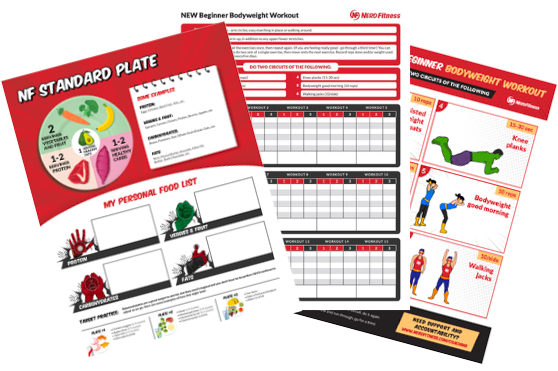The demands of life do not stack up nice and neatly.
Unlike the beautifully symmetrical barbell with its perfectly round plates and secure spring collars, the resistance we deal with on a day-to-day basis tends to be lopsided and even unpredictable:
- Pulling your dog off of the mailman.
- Carrying an asymmetrical load such as a suitcase or bag of groceries.
- Picking up a squirming toddler (who may or may not be throwing a temper tantrum).
So, while you’re laying a solid foundation of superhero strength with barbells, dumbbells, and body-weight training, consider the occasional training session with odd objects. And when it comes to odd objects, you can’t go wrong with the sandbag!
If you are looking to build a sandbag to stop flooding and not for working out, follow the information laid out here [1]:
The most commonly used bags are untreated burlap sacks available at feed or hardware stores. Empty bags can be stockpiled for emergency use, and will be serviceable for several years, if properly stored. Filled bags of earth material will deteriorate quickly.
Commercial plastic sandbags, made from polypropylene, are also available from most bag suppliers.
Do not use garbage bags, as they are too slick to stack. Do not use feed sacks, as they are too large to handle. Use bags about 14-18″ wide, and 30-36″ deep.
A heavy bodied or sandy soil is most desirable for filling sandbags, but any usable material at or near the site has definite advantages. Coarse sand could leak out through the weave in the bag. To prevent this, double bag the material. Gravelly or rocky soils are generally poor choices because of their permeability.
Bags should be filled between one-third (1/3) to one-half (1/2) of their capacity. This keeps the bag from getting too heavy, and permits the bags to be stacked with a good seal.
The contents of a properly constructed sandbag will shift and move in a way that adds an element of instability, challenging your balance and working your “core” in ways that few other training tools can match.
And if you’re the do-it-yourself type of guy or gal, the sandbag is easy to make and will cost less than a copy of Diablo III.
How To Make Your Own Sandbag
There are several ways to make your own sandbag for weight training; I’ve tried many, and the method below is the best for constructing a mid-weight, low-cost bag. I’ll mention a few other options at the end of this section.
But first things first…gather your materials!
What You Need
- 1 canvas laundry bag – $9.70.
- 1 bag of pea gravel (40 – 50 lbs) – $4.39. (note: don’t use pea gravel if you’re building sandbags for flood protection)
- 1 box of contractor garbage bags (3 or 4 millimeter) – $19.99.
- 1 roll of duct tape – $8.78. Sure you could find cheaper duct tape, but this is one thing you don’t want to skimp on.
- 1 package of zip ties – $4.90.
The total cost is less than 50 bucks. The time investment isn’t bad either – making the sandbag should only take about 30 minutes!
What To Do
1. Create the interior bags. Roll the top of one of the contractor bags down so that the bag will sit upright on its own. Pour the gravel/sand into the contractor bag. You’ll be making 3 or 4 interior bags, so don’t pour all of the gravel into one contractor bag. Instead, divide the gravel across one 20 lb. bag, and two or three 10 lb. bags (the weights do not have to be exact).
Once you have filled the contractor bag with gravel to your desired weight, fold down the opening of the bag and duct tape it closed. Be careful to allow some room for the gravel to move around. Wrap the bag in 4 or 5 other places with duct tape to make it secure. Next, double wrap the bag with a second contractor bag (repeat the duct taping process). Repeat this process until all the interior bags are complete.
2. Fill the exterior bag. Place each of your filled and taped contractor bags into the laundry bag. Pull the drawstring on the laundry bag so that the opening is tight. Now make it extra secure by cinching a zip tie or two around the top. The downfall of using zip ties is that if you want to change the weight of your sandbag, you will have to cut them off. But at less than 5 bucks for 100 of them, I don’t mind sacrificing an occasional zip tie when it’s time to increase or decrease the weight of the bag.
3. Enjoy an ice cold beer. After all, it’s probably pretty hot outside
Here’s a video I found of a guy who made his sandbag a similar way!
Alternative Materials And Commercial Options
The laundry bag/contractor bags/pea gravel set-up is far from the only way to make your own sandbag.
For the exterior bag, especially if you want to make a sandbag that weighs over 50 lbs, consider using a heavy duty military-grade duffel bag.
For the interior bags, heavy duty zip lock freezer bags reinforced with duct tape can be used. Another option is to place your filling material directly into your exterior bag, and skip using the interior bags. However this options eliminates the option of changing weight easily and mess-free unless you use chain (see below).
For filler material, options other than pea gravel include:
- Sand (duh), with play sand being most common. I’ve used sand in several bags before without much luck. It seems that a true “sand” bag always tends to leak for me.
- Wood Pellets.
- Rubber mulch.
- Link chain. This is for the true bad-ass. Just toss several feet of heavy link chain into a heavy duty duffel bag, secure the top, and your sandbag is complete. But since it’s not sand, it will bruise you with repetitive shouldering. Consider yourself warned!
Given all of the options, and having made more than a handful of sandbags over the years, the laundry bag/contractor bags/pea gravel is my strongest recommendation for a mid-weight bag.
Commercial Sandbags
If you don’t want to do-it-yourself but still want the benefits of sandbag training, there are plenty of good commercial options. I have personally owned both of the models below:
Ultimate Sandbag: I absolutely love their interior sandbags. They come in various sizes, and the velcro closure is top notch and doesn’t leak. This is the only bag where I have used sand as a filler and not had any leaks. This bag has several handles as well which provide more exercise versatility when compared to bags without handles.
Ironmind Tough As Nails Sandbag: As much as I love Ironmind products (their Captains Of Crush grippers are the standard for grip training), I had some trouble with this sandbag leaking. Perhaps pea gravel or some other filler would have improved this bag’s utility.
How To Work Out With Sandbags
Nearly any exercise that you can do with a barbell, you can do with a sandbag. Now if you’re laughing at a 400 lb deadlift like Staci, then you may have to stick with a barbell for that lift. But for most other exercises, you can substitute the sandbag.
Here are a few examples:
- Push Press
- Thrusters
- Bent Over Rows
- Lunges
- Overhead Squats
- Power Cleans
And those are just a few examples.
For more sandbag workout ideas, check out the three short videos below:
Sandbag Turkish Getup
Sandbag Walking Lunge – Zercher Carry
https://www.youtube.com/watch?v=S6afxcizFt4
Sandbag Man Maker
Each of the workout examples above can be done in the following manner:
- Max reps in a designated time. Set a timer for 5 – 15 minutes and do as many repetitions as possible. Rest as needed, but get back to work as soon as possible. Record the number of completed repetitions and try to beat your score in your next workout session.
- Beat the clock. Decide on a number of repetitions you will complete. Time how long it takes you to finish the designated reps. In your next session, try to complete the same amount of repetitions in less time.
- Intervals. Since the exercises in the example videos lend themselves to longer work periods, a good interval structure may be 1 minute of work, followed by 30 seconds of rest, repeated for 10 rounds. Experiment with increasing and decreasing the work and rest intervals in order to find the appropriate intensity level.
Nerd Fitness Nines
The following workout should be performed as a circuit.
Complete nine repetitions of each exercise before moving to the next, taking as little rest as possible between exercises.
Do at least three complete sets of the circuit.
Or if you are up for the “Nerd Fitness Nines” challenge (WARNING: It will kick your ass), complete nine repetitions of the nine exercises for nine sets. If you don’t know how to do the exercises listed below, watch the videos above.
- Sandbag Get Up Left (keep bag on left shoulder).
- Lunge Left (keep bag on left shoulder, lunge forward with left leg for all 9 reps).
- Push Press
- Sumo Deadlift High Pull
- Zercher Squat
- Alternating Sandbag Shoulder
- Man Maker
- Lunge Right (keep bag on right shoulder, lunge forward with right leg for all 9 reps).
- Sandbag Get Up Right (keep bag on right shoulder).
Get Your Sandbag, Sucka!
 Whether you make one yourself or buy one ready-made, the sandbag is a great training option when you’re ready for a new challenge in balance, strength, and general conditioning.
Whether you make one yourself or buy one ready-made, the sandbag is a great training option when you’re ready for a new challenge in balance, strength, and general conditioning.
What other questions do you have about sandbag training?
Let me know in the comments below!
~ Steve
###
Photo Source: Tj Cowboy Go run some hills




